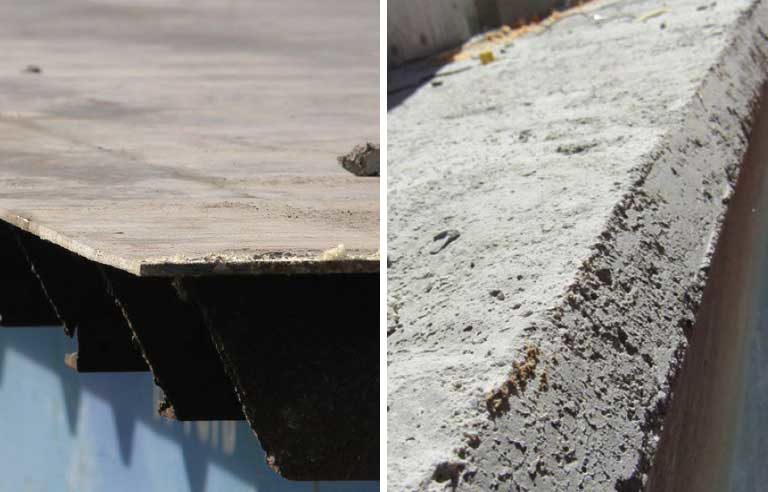
Metal and concrete edges can cut lifelines and lanyards. Photos: OSHA
Washington — Prompted by the death of a worker whose fall protection lanyard was severed by an exposed edge as he fell, OSHA has issued a hazard alert.
Exposed edges may include floors, roofs, decks, platforms or formwork.
“In this case, the lanyard was not approved for working on or around sharp edges,” OSHA says. “Lifeline manufacturers warn about the use of lifelines around edges that could damage the line or prevent it from effectively arresting the fall. Some manufacturers have even developed self-retracting lanyards designed for use around exposed edges.”
The alert lists safe work practices for employers under three main sections: planning ahead, providing the right equipment and training workers on the safe use of equipment.
Employers should:
- Inspect fall protection equipment before it’s used and cover exposed edges that could come in contact with a lifeline or lanyard “regardless of the edge’s composition.”
- Make sure the covering or protective material won’t move when a lifeline or lanyard slides across it.
- Limit fall distance or use another control method to avoid lanyard or lifeline contact with the edge, if covering is not feasible.
McCraren Compliance offers a full range of safety and health training and consulting services. Plus we can help you incorporate well-being into your traditional systems in order to support the Total Worker Health of your workforce.
Call 888-758-4757, email info@mccrarencompliance.com or visit our website www.mccrarencompliance.com
Original article published by Safety+Health an NSC publication


